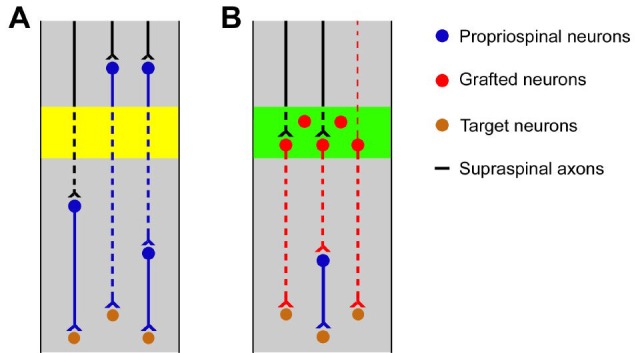Figure 1.

Schematic illustration of neuronal relays in the restoration of complete spinal cord injury.
(A) Under therapeutic interventions without neuronal cell grafting, some supraspinal axons may regenerate across the lesion (yellow area) of injured spinal cords and input to target neurons via an interneuronal relay. In parallel, most propriospinal neurons are prone to regrow axons across the injury and relay brain signal directly to motor neurons or mediated by a spinal interneuron. (B) Neuron-based grafts provide a substrate to relay supraspinal signal transmission passing the lesion of injured spinal cords. Early stage neurons transplanted to the lesion site (green area) can form connectivities with regenerated supraspinal axons in the implant. Their axons may project directly to the target neurons in the distal spinal cord or via a host interneuron. Graft-derived neurons may outgrow dendrites rostrally and convey information from higher centers to spinal neurons.
